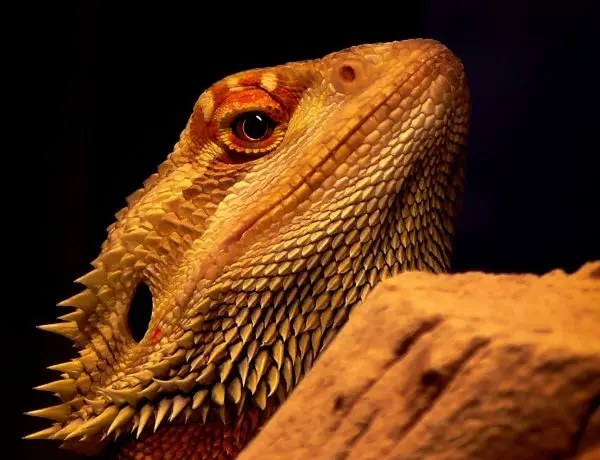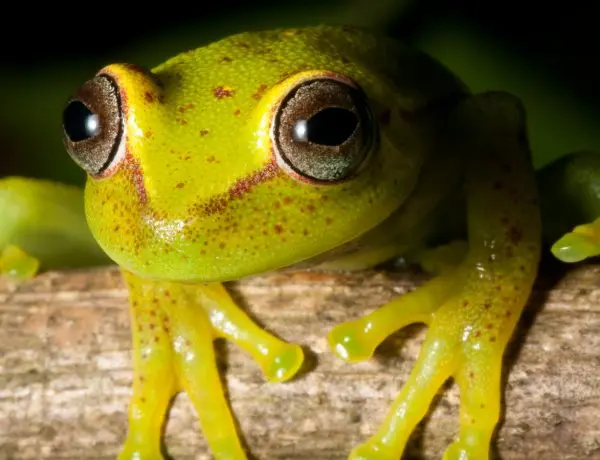Salamanders are docile amphibians that make great pets because they are relatively easy to care for. But, to care for them well, you need to know a bit about what they like – especially what they eat.
Salamanders are carnivorous and eat many types of insects, spiders, and worms. In some cases, they even eat small animals. Choosing their food depends on the size and species of the salamander, as well as your salamander’s personal likes and dislikes.
Spiders!!?? Don’t panic; while they may eat spiders in the wild, there are plenty of less nightmarish options to choose from. Keep reading for less traumatic ways to feed your new pet.
Table of Contents
Types of Food to Feed Your Salamander
Salamanders enjoy a variety of food choices. Many types of food can be kept in the refrigerator or freezer, but you will need a container with a lid to store some types of live food, like crickets—more on that in a moment. A healthy diet should include a variety of food types. With any live food you buy, you want to have the proper equipment to store them and keep them alive between feedings.
There are 4 common types of feeders you can purchase at your local pet store.
- Crickets
- Worms
- Aquatic Worms and Larvae
- Pinky Mice (for larger salamanders)
Crickets
Crickets are a common option to start with, and you can find them at most pet stores. However, it has been said that a diet of only crickets is not very nutritious for them, and it should be supplemented with other foods. It is suggested you lightly dust the crickets with vitamin powder, for better nutritional value, every few feedings.
When you pick out the size of the cricket, you want to consider how big your new friend is. If they have a small mouth, start with small crickets. As your buddy grows, you can increase the size of the crickets.
Cricket Containers
You can keep your crickets in a small, sturdy, ventilated container with a secure lid. You will need to provide a food and water source for them to keep them alive between feedings. Buying crickets in bulk is much more cost-effective in the long run and reduces trips to the pet store.
Feeding Your Crickets
You can toss carrots, potatoes, and some pieces of orange into their container. The orange will provide water, and the vegetables will provide food. You will also want to keep a part of an egg crate in with them, so they have something to climb on, instead of climbing on each other.
Worms
Worms are considered the best option by many salamander enthusiasts when it comes to feeding time. It is worth noting, though, that not all worms are created equal. Here are different options for worms most commonly found in pet stores.
- Waxworms
- Mealworms
- Superworms
- Earthworms
Waxworms
Waxworms are a great occasional meal but have a very high-fat content. This means too many waxworm binges could cause your little friend to put on unnecessary weight. As cute as a chunky salamander would be, being overweight can cause significant health problems and a shorter life span.
Mealworms and Superworms
Mealworms and superworms are not actually worms, they are the larvae stage of the mealworm beetle and the darkling beetle. Their exoskeletons are hard and can be difficult for salamanders to digest. They are also high in fat and should only be fed occasionally. Many owners choose to squish the heads of these worms to prevent the worms from biting your salamander during feeding.
Earthworms: Nightcrawlers and Red Wigglers

Depending on the size of your salamander, you may have to cut up these types of worms. Both nightcrawlers and red wigglers are classified as earthworms and are the favored diet of many breeders and enthusiasts due to their high nutritional value and low-fat content. If you are unable to give your salamander a varied diet, it is a great option to stick to a staple diet of earthworms.
These worms are easy to come by and are sold at local bait shops and pet stores. They are commonly stored in the refrigerator in plastic containers. They are also rather easy to breed, and they reproduce very rapidly.
Worm Hunting
You may be able to find worms in your yard, should you choose. I recommend spraying the ground with water in the evening and sitting back to wait for them to come to the surface for air. Just be careful not to go hunting around any areas treated with pesticides. You can also go searching just after heavy rain.
However, I wouldn’t feed them to your salamander until you have had a chance to gut load the worms (which we’ll talk about later in this article) and make sure anything that might harm your pet is purged from the worms’ systems.
Aquatic Worms and Larvae
Bloodworms, which are actually fly larvae, and tubifex are aquatic dwelling feeders. They can be purchased live or frozen. The frozen option is more convenient, as you just pop a chunk of the frozen worms or larvae in some water to let it melt. You can then use a medicine dropper to feed them by squirting the thawed worms into their water.
Live worms take a bit more care and maintenance to keep alive and healthy enough to feed your salamander. They should be rinsed daily, then covered with water just barely that they are submerged, but not deep enough to drown them, and they should smell faintly of dirt. If they have a strong stench, they should not be used. Caudata Culture has an excellent resource on different types of worms, and how to keep them fresh.
Pinky Mice
If your pet is a larger salamander species, you will have to eventually feed them small animals, such as pinky mice. You can find frozen pinkies at any pet store that sells snakes. You can also buy live pinky mice if you don’t have an issue with feeding them to your salamander live. Many enthusiasts choose the frozen option as it is more humane and less upsetting to watch.
Healthy Eating
Now that you know what food to feed your little buddy, let’s talk about setting up healthy eating habits, and feeding practices to help your salamander thrive.
Feeding Schedule
Salamanders are nocturnal, which means they hunt at night and sleep during the day. They prefer cool weather and stay in shaded areas during the day. Because of this, you should be feeding your pet at night.
Food Supply
Their diet should have variety, as sticking to one food type can cause nutrient deficiencies and can shorten their life expectancy. Many enthusiasts stay away from crickets and mealworms all together due to their thick exoskeleton. This can impact their system and is hard for many species of salamanders to digest.
Meal Portions
When using live feeders, you have to be careful to only provide enough food to satisfy your pet. Any live food left in their habitat might bite at your salamander. Crickets are notorious for this, but if you put a few extra in their cage by mistake, don’t worry. Toss a piece of carrot or potato in there with them. The crickets will likely go for the food instead and leave your salamander alone.
Be sure to consider the size of the food you are feeding. If you are feeding a small salamander big worms, you will want to cut them up into manageable bits. Don’t forget you may want to remove, or squish the head of some types of worms, so they don’t harm your salamander.
Gut Loading
Earlier, I talked about gut loading your salamander’s food. Gut loading is basically loading the crickets or worms up with nutrients to give your pet the most nutrient-rich food you can. You can learn more about gut loading from this article on Science Direct.
You can gut load crickets with flake fish food and a variety of fruits and veggies. Some commonly used foods are,
- Fish Flake Food
- Potatoes
- Leafy greens
- Apples
- Oranges
- Carrots
If you are gut loading your worms, it is a similar process to gut loading crickets. Instead of using veggies, you can sprinkle a small amount of vitamin powder and fish flakes over a nice layer of soil or coconut husk.
Clean Up
After each feeding, you want to make sure you are cleaning up any leftover food and waste. Dead, uneaten food is a breeding ground for bacteria growth. Since most animals relieve themselves before or after a meal, you also want to remove any fecal matter before it creates unsanitary eating conditions.

Got A Picky Eater?
If you are having trouble trying to find a food your salamander likes, don’t get discouraged. Salamanders, like any living creature, have likes and dislikes when it comes to their diet. To figure out the best varieties to try, you will need to know whether you have an aquatic or terrestrial salamander.
Aquatic Salamanders
Aquatic salamanders primarily spend their time in the water. They prefer softer foods, like aquatic worms and larvae, over the crunchier mealworms their terrestrial cousins like. A wide variety of soft worms will probably appeal to them more.
Terrestrial Salamanders
Terrestrial salamanders spend most of their time on land, only going to water during breeding seasons. They do like crickets, and mealworms more than their aquatic cousins, but it is recommended you use freshly molted mealworms, and yonder crickets, as their exoskeleton is much softer and less likely to cause digestive issues.
Now that you have a basic understanding of what and how to feed your pet salamander, be sure to watch our site for more tips and guides to help you with your new pet. Feel free to leave a comment under this post and let us know if you have any other questions!




